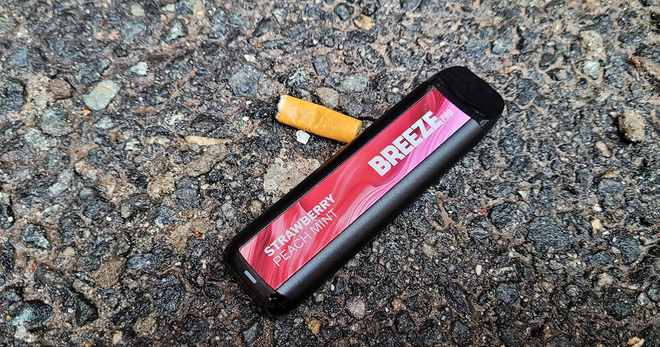5 ways cigarette litter impacts the environment
Even as the smoking rate has gone down, cigarette butts seem to be everywhere, scattered along green spaces, sidewalks, roadsides, beaches, waterways—virtually everywhere we go.
So, it may come as no surprise that cigarettes are the most littered item on earth. Worldwide, about 4.5 trillion cigarettes are littered each year. What does all that cigarette waste mean for the environment? Here are the basics about the environmental impact of cigarette butts.
How much litter is from cigarettes?
Cigarettes make up more than one-third—nearly 38 percent—of all collected litter. Disposing of cigarettes on the ground or out of a car is so common that 75 percent of smokers report doing it.
All these cigarette butts cost big bucks to clean up. Cities spend between $3 million and $16 million on cigarette clean-up.
Is cigarette waste toxic?
Yes! Littered cigarette butts leach toxic chemicals—such as arsenic (used to kill rats) and lead, to name a few—into the environment and can contaminate water. The toxic exposure can poison fish, as well as animals who eat cigarette butts.
What is in a typical cigarette filter?
It may look like cotton, but 98 percent of cigarette filters are made of plastic fibers (cellulose acetate) that are tightly packed together, which leads to an estimated 1.69 billion pounds of cigarette butts winding up as toxic trash each year.
Are cigarettes biodegradable?
No—the plastic fibers in cigarettes are non-biodegradable, meaning they won't organically break down from living organisms.
How long does it take for cigarettes to decompose?
Although cigarettes don’t break down naturally, they can gradually decompose depending on environmental conditions like the rain and sun. Estimates on the time it takes vary, but a recent study found that a cigarette butt was only about 38 percent decomposed after two years.
More in harmful effects of tobacco
Want support quitting? Join EX Program
By clicking JOIN, you agree to the Terms, Text Message Terms and Privacy Policy.
Msg&Data rates may apply; msgs are automated.


